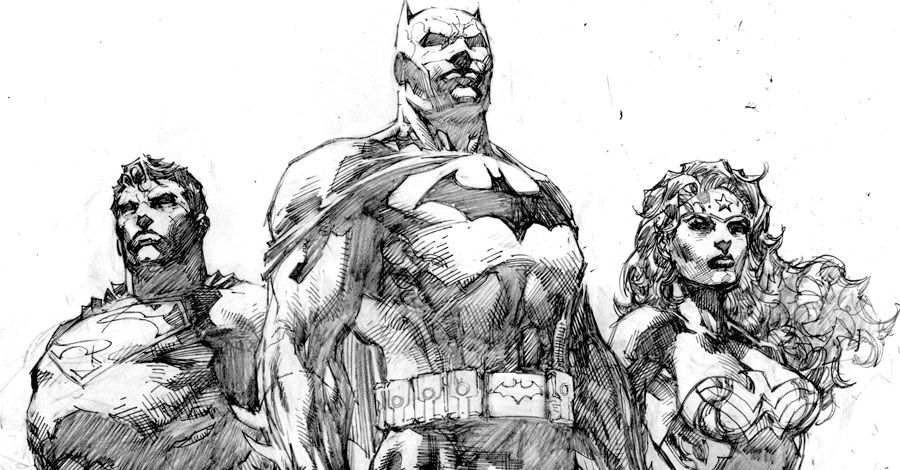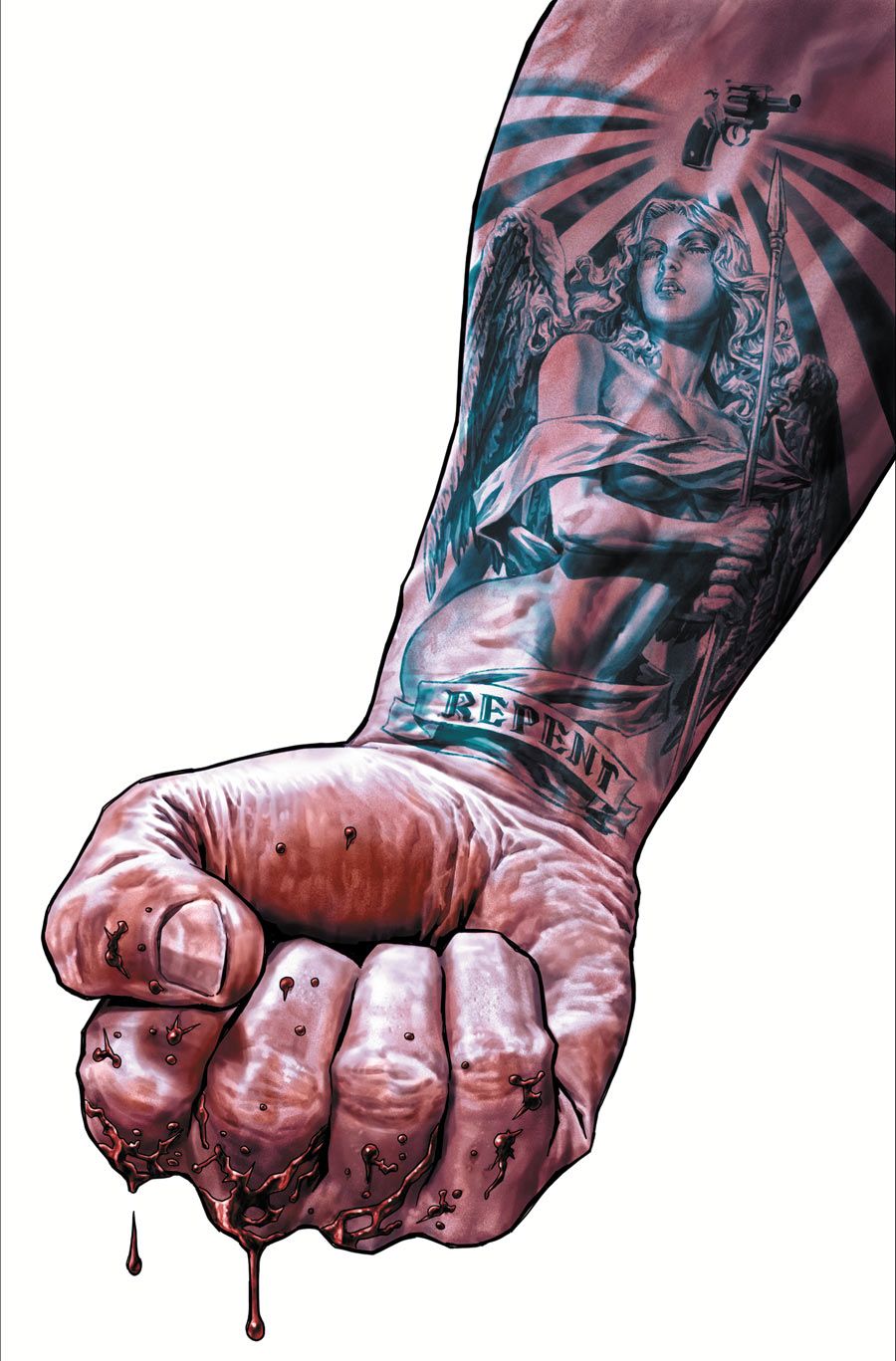Artists Babs Tarr ("Batgirl"), Amanda Conner ("Harley Quinn"), Lee Bermejo ("Suiciders"), and Billy Tan ("Green Lantern") gathered at Comic-Con International in San Diego, discussing their approach to art, storytelling and, well, making comics for the DC Comics Master Class: Art History panel. The artists talked about how they broke into the industry and took questions about drawing from the audience, illustrating solutions to common problems in real time, projected live onto a giant screen.
Moderator Jim Lee kicked off the discussion by asking each artist to relate how they got started in the industry. Tarr talked about being skeptical at first when "Batgirl" writer Cameron Stewart contacted her online. As she got closer to winning the "Batgirl" pitch, she realized that he had been serious. Though she had no background in sequential art, "They could see that I had some bones to work with."
"The message here is, hang out by your computers and wait for a message from Cameron Stewart," joked Lee. The real lesson, Tarr added, is, "Don't be shy; post your stuff everywhere."
Bermejo started pursuing a career in comics as a teenager, and had his heart set on working at WildStorm. "I wanted to learn to draw comics in that environment," he said. Before the rise of the Internet, Bermejo sent packets of photocopies off to different publishers. "It's kinda like sending a letter to Santa Claus, because you're not going to get a response," he said. Eventually he did, however, and landed a job at WildStorm.
Conner had a similar experience, repeatedly soliciting publishers until she was hired to draw a backup story for Marvel. She visited the Marvel offices in New York, where, she said, "They were nice enough to take the time to look at my stuff."
Tan's experience with visiting Marvel in person was completely different, however. "I waited there for about twenty minutes," he said. "Eventually an editor chased me out saying, 'You didn't believe the receptionist that I didn't want to see you?'" Eventually, Tan broke into the industry through Top Cow's talent search. Working at Top Cow/WildStorm, he said, "you learned a lot really quickly."
An audience member asked Tarr how she was adjusting to working in sequential art, considering her background in illustration. Tarr explained that Stewart had given her layouts for the first six issues of "Batgirl," but since issue #7, she's been doing everything on her own. "It's horrifying," she laughed. "It's fun, and I'm getting my own language, which is cool. I'm getting more confidence, every page I draw and every challenge I get."
Conner answered a question about perspective for backgrounds with a demonstration. "This is an Adam Hughes trick. He's probably really annoyed that I tell everybody this." Conner sketched a barn, and then demonstrated how to create perspective lines for a vanishing point by using a ruler to establish proportional points of reference.
Lee stepped in to demonstrate how to draw drapery, showing how fabric both hangs and bunches. "When it gets to the bottom, I just kind of do a squiggle," he explained. Tarr commented that she takes inspiration from simpler, more cartoonish styles for her fabric work. "There's an economical way that you can see how they translate folds." Bermejo added. "Just look at life as much as you can. Draw what you see."
Another audience member talked about getting stuck drawing the same few character poses for layouts, and asked for ideas to get out of that rut. "I'm learning how to do that now," laughed Tarr. "I use these really great Japanese pose books." Conner added, "If you catch yourself using the same poses, then do something else." She said that incorporating different camera angles and choosing interesting moments in fight scenes can add variety as well.
The artists had different ideas about what to do when having trouble with a page layout. "Show friends," said Tarr. "Just do a different page," advised Bermejo. Tarr also said that while working on layouts, she often thinks, "What would Cameron Stewart do for this?" Lee recommended Wally Wood's "22 Panels That Always Work" as an easy source of inspiration for adding visual interest to a page.
"I hate buildings," Tarr responded when asked about pet peeves.
"Super emotional scenes, when you have to transition from something really horrific to something tender," Bermejo added. "Transitions in general, actually," he amended, "Moving through three separate storylines in an issue, seamlessly, is very difficult."


